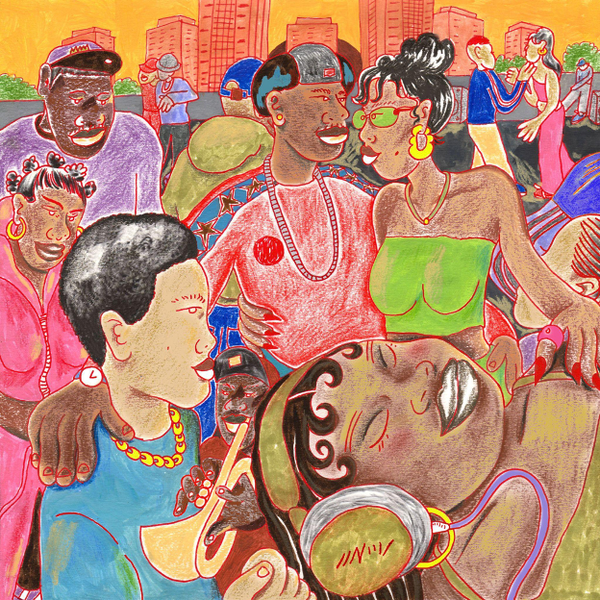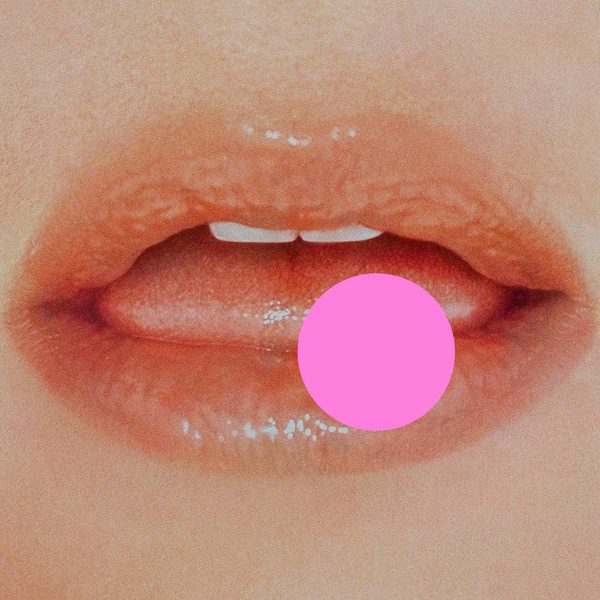TSHA’s Sad Girl finds catharsis on the dance floor
"Sad Girl"

Teisha Matthews opens Sad Girl with an undeniable truth: in the right hands, even sadness can move a crowd.
While the eclectic sound of 2022's Capricorn Sun established Matthews as a rising star in the UK electronic scene, Sad Girl pushes that eclecticism further, now with newfound boldness and vulnerability. A subtle yet poignant narrative ties together an album that jumps through time and sound centred around the eponymous sad girl at the heart of TSHA’s story. The music, the club, and the dance floor become her means of release, with each track offering a different lens on her growth.
Dan Whitlam’s spoken-word narration on “Sad Girl” sets the album’s tone: “Sometimes the sad feels better than the good / and that’s okay / Sometimes we want blue skies to fade into clouds of perfect grey,” he shares, capturing bittersweet acceptance amid crystalline synths and ambient textures. But this glum introduction isn’t static. “Girls” follows – an empowering pop anthem featuring Rose Gray that blends house and breakbeat – and we see the sad girl, and TSHA, finding strength in the club where she now reigns supreme. “Heal like you never cried, dance like you never tried,” Gray sings, a mantra of joyful rebellion and release through movement. While “Girls” draws from TSHA’s 90s rave influences, it steps boldly into more assured territory, alive with kinetic energy – equal parts nostalgic throwback and a fresh take on dance music.
Blending drum and bass and UK garage on “Can’t Dance,” TSHA shifts from the club to a school dance, capturing the innocence of social awkwardness between a boy and girl too self-conscious to move. Master Peace’s punchy vocals bring the moment to life as he sings, “he wants to move, but he can’t” and “she wants to dance, but she can’t.” The tension between the lyrics and the relentless beat gives the track its charm, as the characters finally let go and lose themselves in a song that also commands us to dance.
TSHA often uses vocals as textures rather than central elements in her work, but on Sad Girl, they play a more integral role, with many tracks following traditional song structures. Mathews debuts her singing on two tracks, holding her own among the album’s varied cast of features. Her voice recalls Annie Lennox on “In the Night,” a track celebrating the freedom of a perfect night out or time spent creating in the studio (“I keep on finding myself in the night” and “I wanna be young forever / I wanna be high forever / I wanna be free forever”). On “Green,” written after a fight with her partner, she admits, “I’ve lived a million lives in my 31 years / I’ve cried a million times.” Here, TSHA lets her voice take centre stage, showcasing her developing songwriting and lyricism while adding new layers of vulnerability to her lush beats.
“Lonely Girl” reminds us that the girl from the album’s start remains at its centre. This ambient interlude offers a breath of fresh air amid the dance-heavy tracks, transporting us into a serene garden of metallic blips and glitches, like morning birdsong by the ocean – only otherworldly and electronic. On the melancholic “Azaleas,” a pastoral ballad with understated synths and strings reminiscent of Bibio, TSHA uses another genre shift to give us emotional rest before the beat returns. At the track’s end, Ingrid Witt’s layered breath over synths and piano foreshadows the jarring sirens on album closer “Fight.”
The high-energy house cut “Take” nods to TSHA’s earlier work on Capricorn Sun’s “Power,” ramping up the energy with bigger beats and deeper bass. With the penultimate track, “Drive,” the emotional arc hits its zenith. Featuring Ingrid Witt again on vocals and referencing Massive Attack’s “Unfinished Symphony,” the song melds euphoric drum and bass with cinematic strings and house piano (subtly echoing the synths in “Girls”) as it captures the sad girl finding freedom in motion – driving toward a new destination while reflecting on how far she’s come.
Life rarely unfolds in a single genre, and TSHA captures this messiness through her deliberate production choices on Sad Girl. While the album shifts between moods and energies – joy, sadness, release, introspection, and frustration surface alongside breakbeat, house, UK garage, ambient, and R&B sounds – the stark contrasts feel balanced, serving the larger arc of finding oneself amid the chaotic transition from adolescence to adulthood. It’s a progression in sound and storytelling, revealing an artist unafraid to take risks and dig deeper into her own experiences. Here, TSHA creates space for personal and collective refuge, affirming that sadness can fuel catharsis on and off the dance floor.
Get the Best Fit take on the week in music direct to your inbox every Friday

Gwenno
Utopia

KOKOROKO
Tuff Times Never Last

Kesha
.





